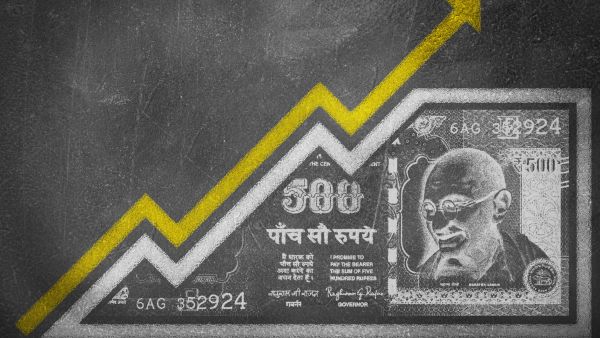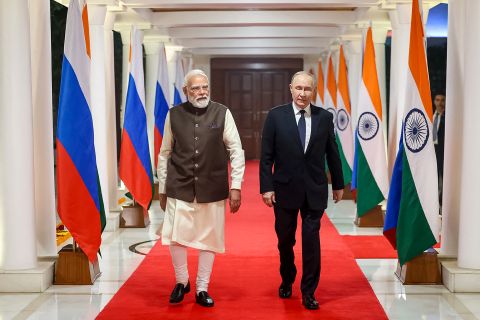Last January, the world's richest man Jeff Bezos visited India and made a prediction that the 21st century "will be an Indian one." Economists have noted that India is witnessing its highest peak of growth since gaining independence in 1947, but what are the indicators pointing to this Indian rise?
Dynamism. Energy. Democracy. #IndianCentury pic.twitter.com/U6cKJO60Rz
— Jeff Bezos (@JeffBezos) January 15, 2020
Being the second most populated country in the world, and the seventh in terms of area, India's decades-long policies of economic revival- taking advantage of every available opportunity- seems to pay off, even if gradually.
Maintaining an increasingly higher literacy rate through socio-economic programs has definitely shown in more developed Indian skills and a growing dynamic spirit and determination to achieve success.
During his surprise visit to the south Asian nation, Bezos referred to "special energy" he's seen in India, arguing that it forms a potential success that awaits the "largest democracy in the world."
Bezos could be absolutely right in this regard. India's economy is steadily booming and drawing worldwide attention, especially as anger towards China, Asia's strongest economy, has amounted since the Coronavirus outbreak earlier this year.
India's economy is forecast to bounce back with a sharp growth rate of 9.5 per cent next year provided it avoids further deterioration in financial sector health, Fitch Ratings said
— Economic Times (@EconomicTimes) June 10, 2020
https://t.co/ViXnwIA5Lr
Even though India's economic plans are decades-long, it can definitely use a little push by the powerful connection between India's Prime Minister Narendra Modi and US President Donald Trump.
Ever since he was inaugurated as president of the world's strongest economy, Trump has been targeting the Chinese economy, forcing China to sign a trade deal in an attempt to curb its rise. The Modi-Trump friendship based on mutual political ideologies could save India from meeting similar troubles, at least for the time being.
During recent years, India has been clearly focusing on luring international giant corporations into investing in the country with 1.3 billion citizens.
It has also been trying to utilize its large population that forms skilled yet cheap labor in addition to its massive area to attract supply chains, hoping to become the world's next factory, a position taken over by China for many years so far.
For example, India is the world's second-largest smartphone market with 55% of its enormous population having access to 4G subscriptions, which has led its giant tech company Reliance to receive generous investment offers from different corners of the world.
Indian shares rise led by financials, Reliance Industries https://t.co/POPfXvdUBx
— Reuters India (@ReutersIndia) June 8, 2020
According to CNN, Reliance's business operations range between online shopping, video streaming services, retail, oil and energy investments, mobile and broadband carriers, in addition to several digital platforms, all making it a strong candidate to join the world's tech giants club.
Last month, Bloomberg reported Saudi Arabia’s $320 billion sovereign wealth fund PIF plans to invest in Indian business conglomerate Reliance Industries Limited's digital unit, potentially purchasing Jio Platforms, the Indian telecommunication carrier.
Another Bloomberg report also highlighted a very recent Abu Dhabi's investment of $752 Million Reliance Industries Digital Arm. Additionally, Facebook too made a $5.7 billion investment in Jio Platforms.
In 2014, the Indian government launched the "Make in India" program aimed at accelerating manufacturing operations in the country, in efforts to encourage investments and small businesses to be more involved in the manufacturing sector.
Western Digital is now making its microSD cards with 1TB storage capacity in Bengaluru. #MakeInIndia pic.twitter.com/bkUtj011Gc
— Kiran Kumar S (@KiranKS) June 3, 2020
The India Brand Equity Foundation explains that the program was "designed to facilitate investment, foster innovation, enhance skill development, protect intellectual property, and build best in class manufacturing infrastructure in the country... in 25 sectors; automobiles, automobile components, aviation, biotechnology, chemicals, construction, defense manufacturing electrical machinery, electronic systems, food processing, IT & BPM, leather, media and entertainment, mining, oil and gas, pharmaceuticals, ports and shipping, railways, renewable energy, roads and highways, space, textile and garments, thermal power, tourism and hospitality, and wellness."
Indian #renewable #energy company Adani Green Energy Limited (AGEL) is set to develop 8GW of #solar capacity as part of the nation’s ‘self-reliant’ programme.@AdaniOnlinehttps://t.co/KgUD42RN4P
— Energy Live News (@EnergyLiveNews) June 10, 2020
All of this, in addition to Indian billions worth of investments in renewable energy, qualified the Indian economy for a historic rise, one that could be even more sustainable in the world as it approaches financial strains and environmental dangers.








